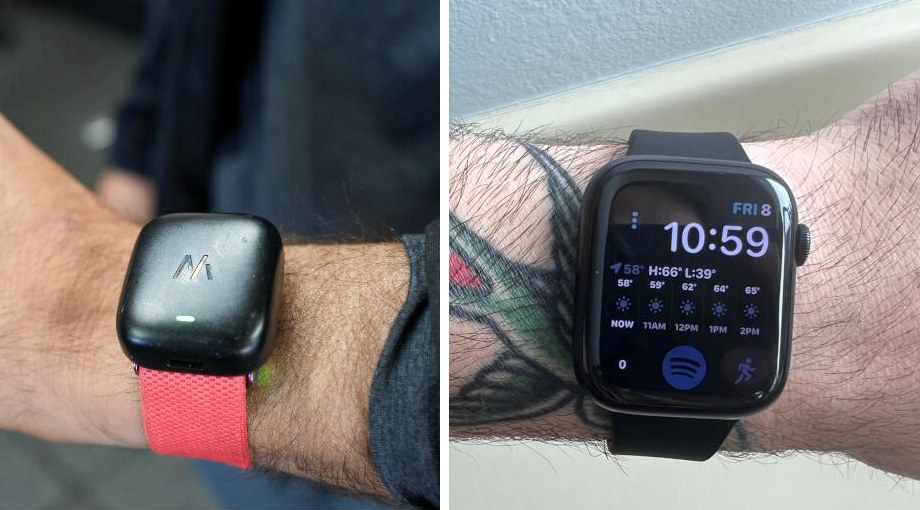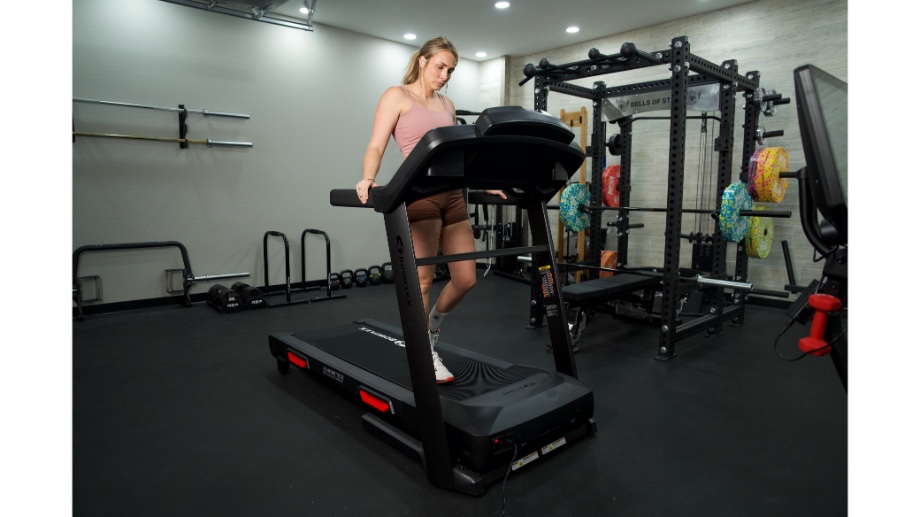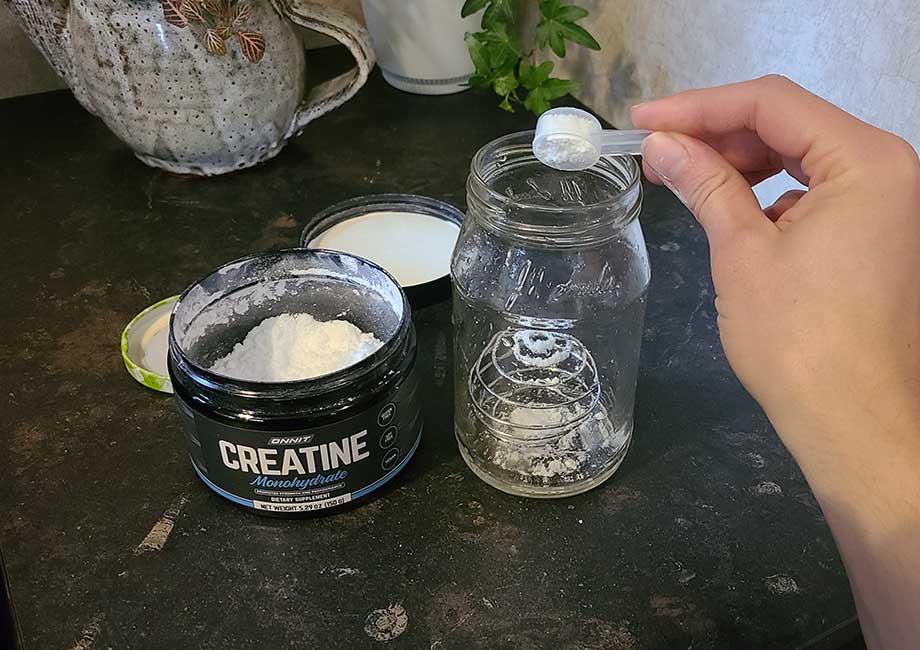Although I have no plans to stop wearing my Apple Watch Series 8, I’ll be the first to admit having a smartwatch that essentially acts as an extension of my iPhone can be distracting. While I can weather the notification storm and mostly stay focused, others may prefer screenless devices like the Oura Ring, Samsung Galaxy Ring, or Whoop 4.0.
Which side of the fitness tracker vs smartwatch line do you fall on? This Whoop vs Apple Watch breakdown will give you perspective on the similarities and differences between two popular wearables that both offer excellent tracking capabilities and a high degree of customization. So, if you’re on the fence about whether Whoop or Apple will help you best stay accountable, use this side-by-side comparison to weigh the pros and cons of going with a screenless strap or one of the top smartwatches.
Whoop 4.0
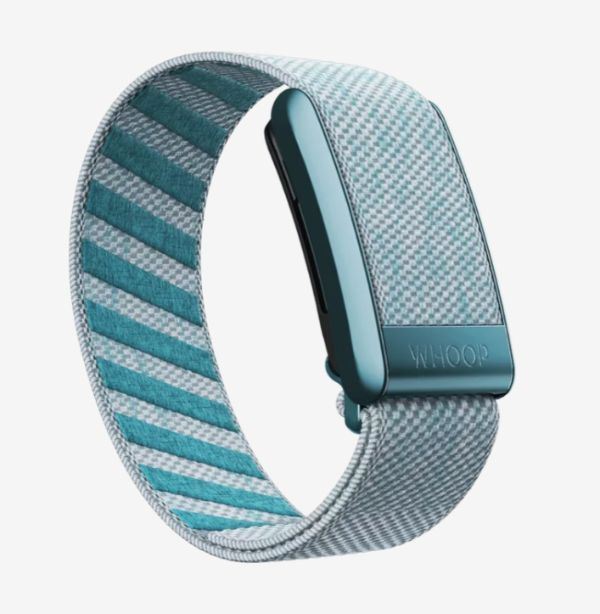
Product Highlights
- Fitness tracker without display
- Whoop app delivers data
- Tracks blood oxygen, skin temperature, and heart rate
- Also tracks sleep metrics
Pros & Cons
Pros
- 24/7 physiological data available
- Offers more in-depth metrics than most other fitness trackers
- Comes with a “coaching” feature to tell you when to train and when to rest
- Comfortable to wear
- App is user-friendly
Cons
- Monthly membership fee required
- No step counter
- No watch face or display
Bottom Line
If you’re someone who takes their training seriously, the Whoop 4.0 could be an effective tool for you to use.
Apple Watch Series 10
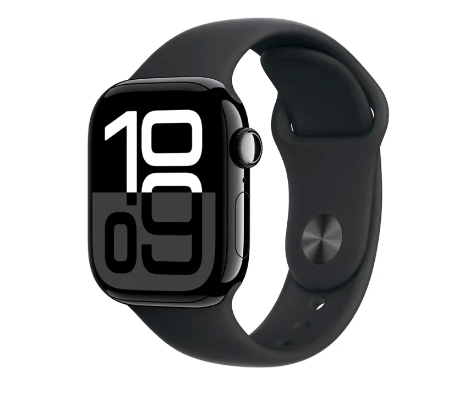
Product Highlights
-
Pricing starts at $399
-
18-hour battery life
-
Seamless integration with other Apple devices
-
Tracks heart rate, steps, ECG, sleep apnea
-
Can track body temperature and energy expenditure
-
Optional data plan available
-
Added data unlocks calls and texts without your phone
Pros & Cons
Pros
- Tracks heart rate, body temperature, ECG readings, and more
- Stream music, calls, and texts with a data plan
- Works seamlessly with other Apple products
- Fast charging and bright display
Cons
- Battery only lasts up to 18 hours
- Sensors don’t work well with tattooed skin
- Only a slight improvement from the Series 9
Bottom Line
The Apple Watch Series 10 is an excellent smartwatch that’s made some small improvements over the Series 9, including a larger, thinner screen and faster charging time. This is the perfect choice for iPhone users who want a watch that acts as an extension of their phone.
Whoop vs Apple Watch: Comparison Chart
| Whoop 4.0 | Apple Watch Series 10 | |
| Price | $239 (annual membership)$399 (24-month membership) | $399-$699 (depending on finish and size) |
| Display size | 1.7” x 1.1” x 0.4” | 42 mm x 36 mm, or 46 mm x 39 mm |
| Battery Life | 4-5 days | Up to 18 hours of normal use; up to 36 hours in low-power mode |
| Display size | N/A | 416 x 496 pixels |
| Water resistance | Up to 10 meters for 2 hours | 50 m |
| Metrics tracked | Sleep, heart rate variability, blood oxygen, skin temperature, calories burned | Heart rate monitoring, ECG, sleep apnea detection, respiratory rate, wrist temperature, sleep duration, cycle tracking, fitness activities, daily steps, calories burned |
| Colors | 35 default colors; custom colors available | Jet Black, Rose Gold, Silver, Slate, Gold, Natural |
| Warranty | 1 year | 1 year |
Quick Look: Whoop vs Apple Watch
Apple entered the wearable technology market a decade ago by releasing the first-generation Apple Watch in April 2015. Since then, the company has unveiled a new model on an annual basis, most recently bringing the Series 10—our top-rated Apple Watch—into production in September 2024. Sleek, stylish, and packed full of user-friendly features like real-time notifications, activity tracking, and sleep tracking, the Apple Watch comes in different finishes and sizes.
On the other hand, Whoop specializes in screenless fitness trackers — a smart solution if you’re prone to letting pings distract you from the task at hand. The company’s latest device, the Whoop 4.0, can be worn on your wrist or moved to your biceps with an upper arm band. The Whoop strap tracks several different metrics, giving you scores in four categories: sleep, recovery, strain, and stress. However, it does not track your steps.
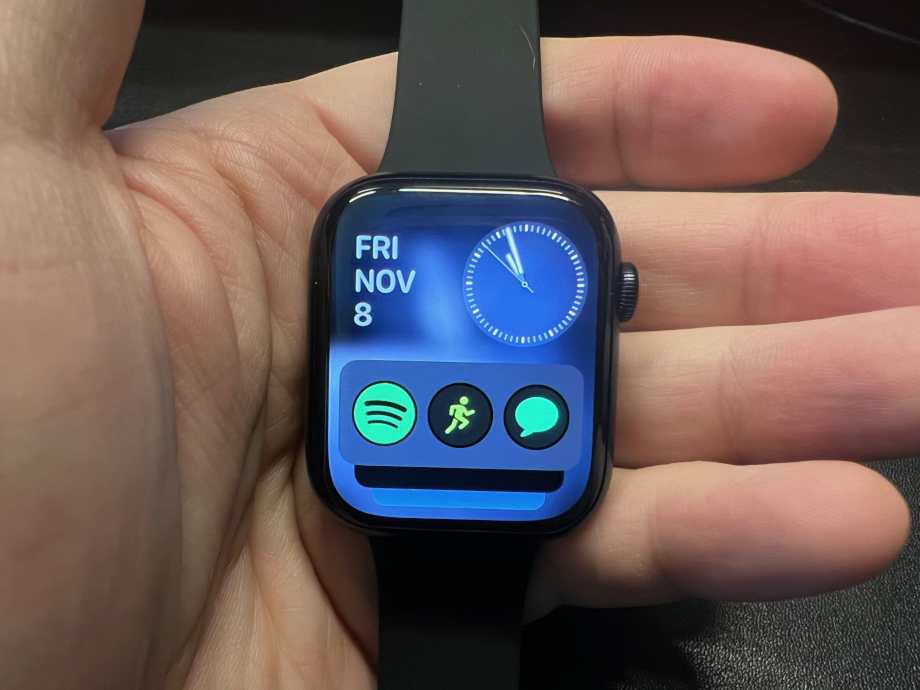
To make it simple: Whoop is a solid option if you’re less concerned about notifications and connectivity and more concerned about fitness and sleep tracking.
Who Should Buy an Apple Watch
- Those who prefer a device that shows the time
- People who want to remain connected to answer calls, texts, etc.
- Fitness enthusiasts who want to integrate their Apple Health data
- Runners or athletes who need GPS tracking capabilities
Who Should Buy a Whoop
- Athletes who want to improve their recovery
- Folks who don’t want to be distracted by a screen
- Those looking for more insight into their sleeping habits
- People who like customizing their fitness tracker to match different aesthetics
Key Similarities Between Whoop and Apple Watch
- Both devices monitor key health metrics, including heart rate, calories burned, and blood oxygen levels
- Both are meant to be worn around the wrist; though you can wear the Whoop 4.0 around your biceps or in clothing from the brand’s Whoop Body line.
- You can select from a number of different band color and material options for either device.
- Both devices offer sleep and cycle tracking.
RELATED: Whoop vs Oura
Important Differences Between Whoop and Apple Watch
- The Whoop 4.0 is a screenless device; the Apple Watch Series 10 features an OLED always-on retina display.
- You must pay a monthly subscription (about $30/month) to gain access to your Whoop data and insights. There is no fee to use the Apple Watch.
- The Whoop 4.0 performs 24/7 heart rate monitoring and provides more in-depth sleep data than the Apple Watch.
- While the Whoop tracks more than 100 types of workouts, the Apple Watch only does 20.
- The Whoop whoops the Apple Watch in terms of battery life, offering up to 4 to 5 days of usage compared to just 18 hours of normal use or 36 hours in low-power mode.
- The latest Apple Watch offers far superior water resistance (50 meters) than the Whoop 4.0 (up to 10 meters for two hours).
- Apple Watches allow you to receive and respond to calls, texts, and other notifications from your wrist. Whoop devices do not.
- In general, Apple Watches are more expensive. The top model, the Apple Watch Ultra 2, starts at $800.
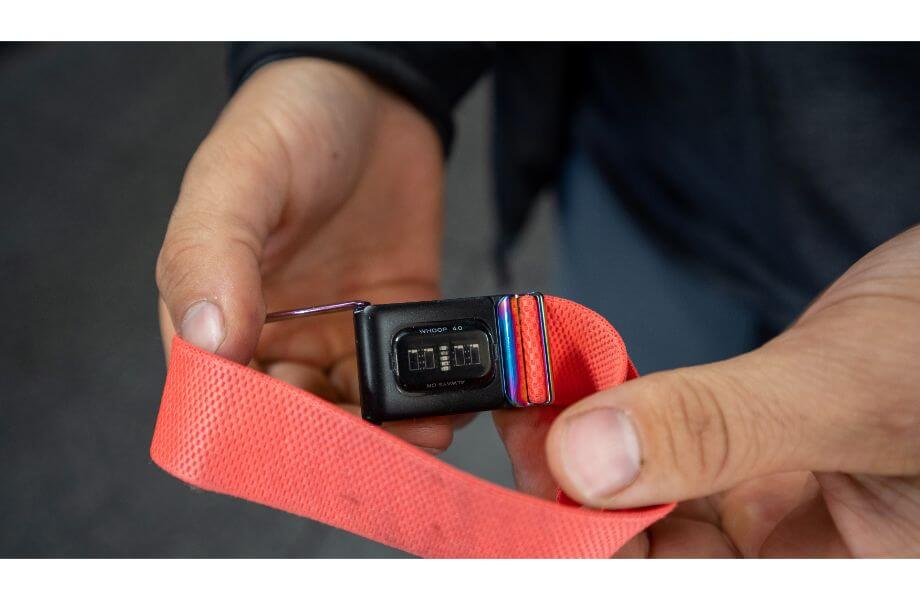
RELATED: Fitbit vs Apple Watch
Tracking Features
Let’s face it: This is what matters most when you’re deciding whether to go with a Whoop or an Apple Watch. Let’s explore the different tracking features each device offers below.
Whoop
The Whoop 4.0 earned 4.5 out of 5 stars for tech capabilities thanks to its ability to give readings in four critical areas: sleep, recovery, strain, and stress. Of course, you must sync your strap to the Whoop app to record your workouts — a minor annoyance if you expected your fitness tracker to automatically track everything you do. Thankfully, the app is available for both iOS and Android users.
What can you expect from the Whoop app? You’ll be able to see graphs with your average heart rate data, max heart rate, HRV, and calories burned. This data is used to determine your workout strain (how hard you trained on a specific day).
In addition, Whoop can help you know when it’s time for a rest or active recovery day with its recovery score system. However, GGR founder and Whoop user Cooper Mitchell noted that the recovery score is not always accurate.
RELATED: Best Muscle Recovery Tools
Beyond activity tracking, the Whoop 4.0 allows you to glean more insight into your sleep patterns. The Whoop app uses various algorithms to generate daily reports on your sleep performance, even offering suggestions on how long your next night’s sleep should be. This can help you establish a baseline and make lifestyle changes that allow you to enjoy more REM (rapid eye movement) and deep sleep.
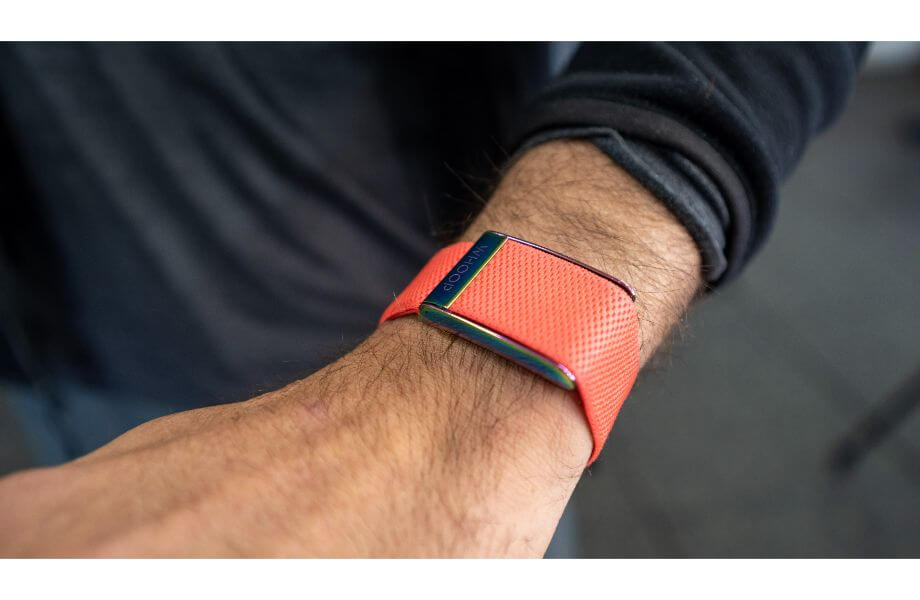
Another neat feature: You can set a silent haptic alarm within the app that’ll vibrate your band when it’s time to wake up. Coop takes advantage of this unique feature to allow the rest of his family to stay asleep when he’s up at 5 a.m.
Apple Watch
Earning a perfect 5 out of 5 for tech capabilities, the latest Apple Watch tracks a variety of metrics using state-of-the-art sensor technology. As a Series 8 user for the last two years, I can vouch for the value of being able to see exactly what you did during a workout or exactly how much time I spent in REM sleep after a tough day.
Here’s a brief overview of what the Apple Watch tracks:
- Activity: Uses three color-coded rings to summarize your movement, time standing, and number of minutes exercises.
- Sleep: Estimates time spent in each sleep stage (REM, Core, and Deep), as well as when you might have woken up.
- Vitals: The Vitals app tracks overnight health metrics, such as heart rate, respiratory rate, wrist temperature, blood oxygen, and sleep duration.
RELATED: Best Budget Fitness Tracker
Of course, many Apple Watch users track their training sessions using the Apple Fitness app. I log my workouts daily, which allows me to keep track of trends and stay more accountable. The Apple Watch is also compatible with many of the best workout apps, giving you more flexibility to fine-tune your training and tracking experience.
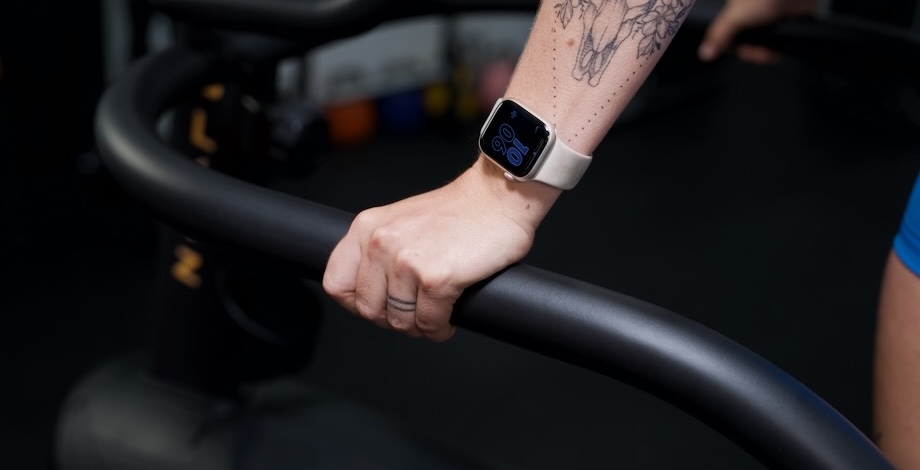
Construction and Design
Talk about two ends of the fitness tracker spectrum. On one hand, you have a screenless, more discrete device in Whoop. On the other hand, you have a premium smartwatch with a fantastic touch screen. Here’s a more detailed breakdown of how each device is constructed.
Whoop
Is the Whoop 4.0 the most aesthetically pleasing fitness tracker? Compared to the more luxurious Apple Watch, it’s easy to see why it “only” earns 4 out of 5 stars. However, even though it doesn’t have a screen, it’s still well-built, lightweight, and available in a multitude of color options. In fact, Whoop claims that there are 74,000 color and material combinations.
The Whoop 4.0 comes in two materials: a soft Superknit or durable Proknit strap. Although the company claims it “feels like nothing” on your wrist, Coop says, “I definitely notice it there, especially when working out and hitting it with a kettlebell or something, but it’s not much of a nuisance.”
Although the Whoop 4.0 is “waterproof,” it wasn’t designed for deep sea diving or anything of the like. It only goes up to 10 meters (32 feet), a far cry from the Apple Watch, which can be submerged up to 50 meters (164 feet).
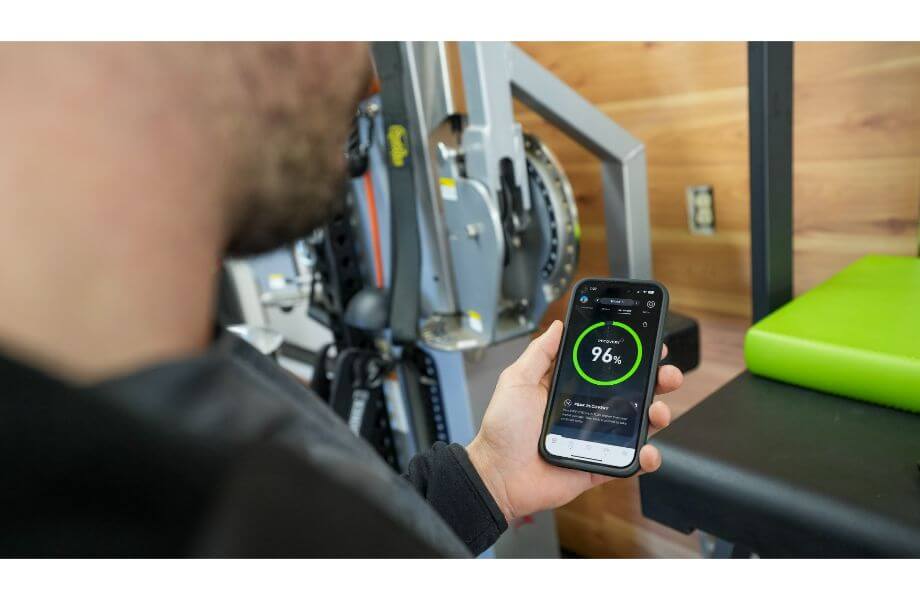
Apple Watch
The Apple Watch Series 10 comes in two finishes: aluminum or titanium. The former starts at $399, while the latter starts at $699.
You can also choose between a 42-millimeter or 46-millimeter case. Apple also gives you three standard band options: a flexible, swim-proof silicone rubber, a soft, lightweight textile, or a more sophisticated stainless steel.
Although I’m two series behind, I love the look of my Apple Watch Series 8 with the standard black rubber band. If I was keen on fashion, I’d have a few other options to match whatever outfit I’m wearing. Still, you can’t go wrong with a well-designed smartwatch that can be highly customized to your liking.
One of our reviewers gave the Series 9 a 4-out-of-5 rating for aesthetics but a perfect score for adjustability, which highlights how Apple caters to users of all different tastes.
Battery Life
One of the main factors users look for in a fitness tracker is battery life. After all, you want your device to last long enough that you can get a ton done without needing to plug it back in. Who wins the battery life battle between Whoop vs. Apple Watch?
Whoop
One of the few areas where the Whoop 4.0 stands head and shoulders above the Apple Watch is battery life. This device can stay powered on for four to five days — a remarkable feat for a fitness tracker.
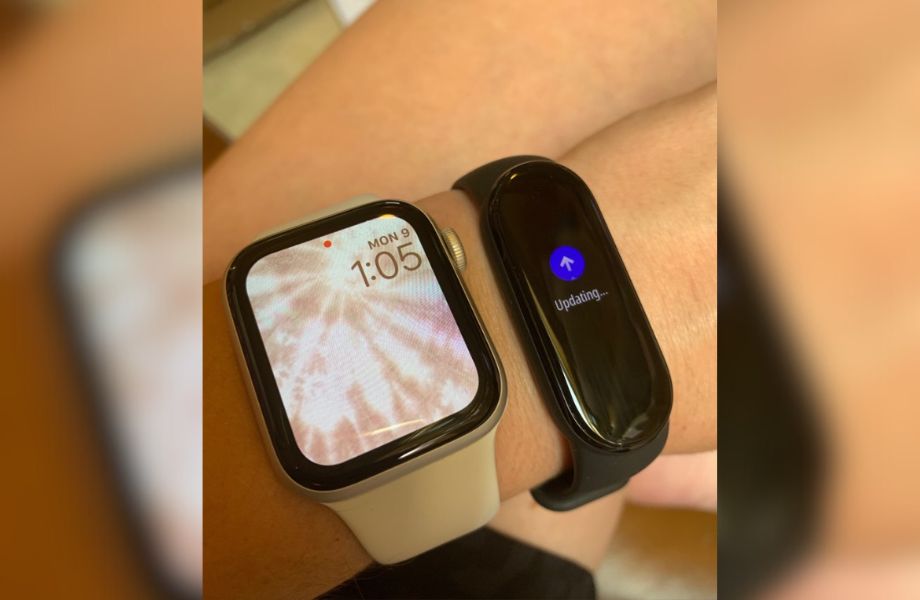
In addition, Whoop sells a slide-on battery pack that allows you to fully charge your device as you’re wearing it in about an hour. The GGR team gave the Whoop 4.0 a well-deserved 5-star rating for battery life.
Apple Watch
The Apple Watch Series 10 has a battery life of up to 18 hours on normal use. According to Apple, it can last for 36 hours on low-power mode. This is solid, but not nearly as impressive as the Whoop 4.0, which lasts for nearly a week. For a more apples-to-apples comparison, the Garmin vivoactive 5 smartwatch lasts 11 days, putting it in a class of its own.
Nicole Davis, GGR head of content and a dedicated fitness enthusiast, experienced plenty of frustration with her old Apple Watch’s less-than-stellar battery life.
“I had the Series 6 and I hated the battery life,” she explains. “I had to charge it every night, which meant I couldn’t really use the sleep tracking metrics.”
Fortunately for Apple Watch users, these devices are the kings of connectivity (as long as you have an iPhone). Not only can you keep track of all of your data in the Apple Fitness and Apple Health apps, but you can download a number of third-party apps to take full advantage of the tracking technology.
Customer Reviews
Customer reviews paint a very different picture of both devices. While Whoop generates mixed feedback, the Apple Watch Series 10 receives near-unanimous praise from users. Here’s what customers have to say about each of these fitness trackers.
Whoop
The Whoop 4.0 has earned a rating of 3.9 stars based on 1,878 reviews on Amazon. Customers enjoy being able to get insight into their sleep stages. However, several negative reviews call out charging issues, ease of use, and value for the money.
To give a complete picture, here’s a mix of both positive and negative feedback:
“I’ve had this for a little less than a week but so far it’s been very useful. The data it provides gives great insights that I use to maximize my general health and fitness. The sleep tracker has changed my behaviors so I can be at a higher level all day especially for workouts. Sleep detection and activity detection make it easy to see performance for both with minimal interaction with the app. I also like the community section so I can see where I stack up in my gym group compared to those I know are very fit,” a customer named Erik Rausch wrote in his 5-star review.
Ironically, a customer named Don quickly realized the error of his ways after purchasing the Whoop.
“Switched my Apple Watch, but honestly don’t see enough value over what I was getting out of my Apple Watch for free,” he wrote in his 2-star review.
Another disappointed customer named Rajat left a 1-star review, suggesting going with Fitbit over Whoop.
“This is a very substandard product and technology. The band hurts the wrist, it takes an engineer to wear it. The charging is difficult. The Fitbits being sold for over a decade now are much better.”
Apple Watch
The Apple Watch Series 10 has earned an impressive rating of 4.6 stars based on 1,174 reviews on Amazon. Customers appreciate its vibrant, colorful display, exceptional functionality, and ease of use.
“From the moment I unboxed it, the premium design and sleek interface stood out. It’s not just a timepiece—it’s a versatile tool that integrates seamlessly into daily routines. The features are abundant, yet intuitive, ranging from health monitoring (like heart rate, sleep tracking, and blood oxygen levels) to convenience features like weather updates, notifications, and even wallet functionality,” a customer named Joe Green wrote in his 5-star review.
Another customer named Andrew T. upgraded from a Series 5, and it didn’t take long for him to appreciate the newer features of the Series 10.
“If you’ve never had an Apple Watch, and are on the fence about buying one… just buy it, it’s more useful than you think. I never used to wear watches as a kid, then when cell phones came around, I figured I’d just pull my phone out to check the time… Well decades later, I finally got on the bandwagon, and turns out I use it all the time. It’s nice to quickly check the weather forecast, start my car/truck, check and respond to a quick text, timers, walkie talkie, health data, and of course, checking the time.”
Company Policies
From warranties to returns to customer service, these little details can make a huge impact on your purchasing experience. Luckily, both Whoop and Apple rate highly in this area.
Whoop
Whoop provides an industry-standard one-year warranty for its straps. In addition, you can try the Whoop 4.0 for 30 days from the date of delivery before deciding whether you want to return it. You will have to pay for shipping and handling in order to receive a full refund.
Overall, the GGR team gives Whoop 4.5 out of 5 stars for warranty and returns.
However, getting in touch with customer service isn’t quite as easy as it is with other companies. Whoop only offers support via email or phone. The GGR team gave Whoop a 4-star rating in the customer service category.
Apple
With a similar one-year limited warranty, Apple separates itself from Whoop with its affordable AppleCare+ program. Starting at just $2.49 per month or $49 for two years for Apple Watches, this protection plan extends your coverage and includes unlimited incidents of accidental damage protection. You can also finance your Apple Watch with an Apple Card, which gives 3% daily cash back upfront on the full cost of your Apple Watch.
We gave Apple a 4-out-of-5 rating in this category and a perfect score for customer service, as GGR team members have had positive experiences with chat and phone support, as well as Genius Bar members.
Whoop vs Apple Watch: Final Thoughts
Is Whoop worth the hype? If you’re less worried about staying in the loop with all your calls, emails, and texts and more focused on getting insight into your health, recovery, and sleep, it’s a solid option. Plus, we like that you aren’t tied down to wearing this gadget around your wrist, as Whoop’s Body line makes it possible to keep this tracker hidden in a sports bra, leggings, jacket, and other compatible apparel.
However, the Apple Watch remains one of the best fitness trackers because it checks so many boxes beyond tracking your workouts and sleep. It functions well with a variety of third-party apps and fits seamlessly into the ever-expanding Apple ecosystem. So, if you’re an iPhone user looking to level up your health and fitness in style, it’s hard to go wrong with any of the Apple Watch models on the market.
Ultimately, you need to decide whether a screenless (aka distraction-free) device that requires a monthly subscription is a better investment than a smartwatch with a higher upfront cost that keeps you connected at all times.
FAQs
Can an Apple Watch replace a Whoop?
Because the Apple Watch offers similar tracking capabilities and additional features such as real-time notifications, calls, and text messaging, it would be a suitable Whoop replacement. On the other hand, going from an Apple Watch to a Whoop or a smart ring would be a major adjustment due to their vast differences.
Is Whoop actually worth it?
The Garage Gym Reviews team believes the Whoop 4.0 is only worth it if you’re a serious athlete looking for in-depth health and performance data. Look elsewhere if you want a smartwatch or a device that tracks your daily step count.
Can I track recovery with an Apple Watch?
The Apple Watch does not track your recovery like Whoop, which provides a recovery score based on factors such as heart rate variability (HRV), resting heart rate, sleep performance, and skin temperature.



